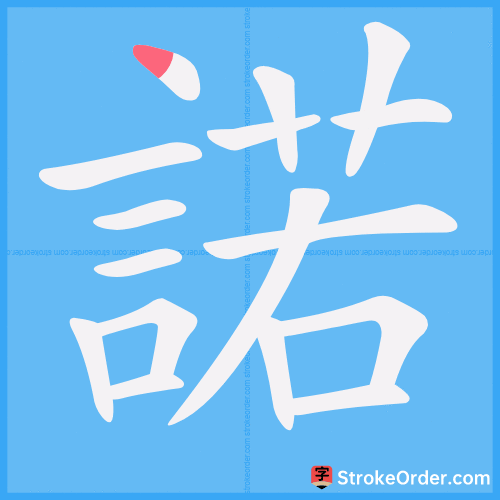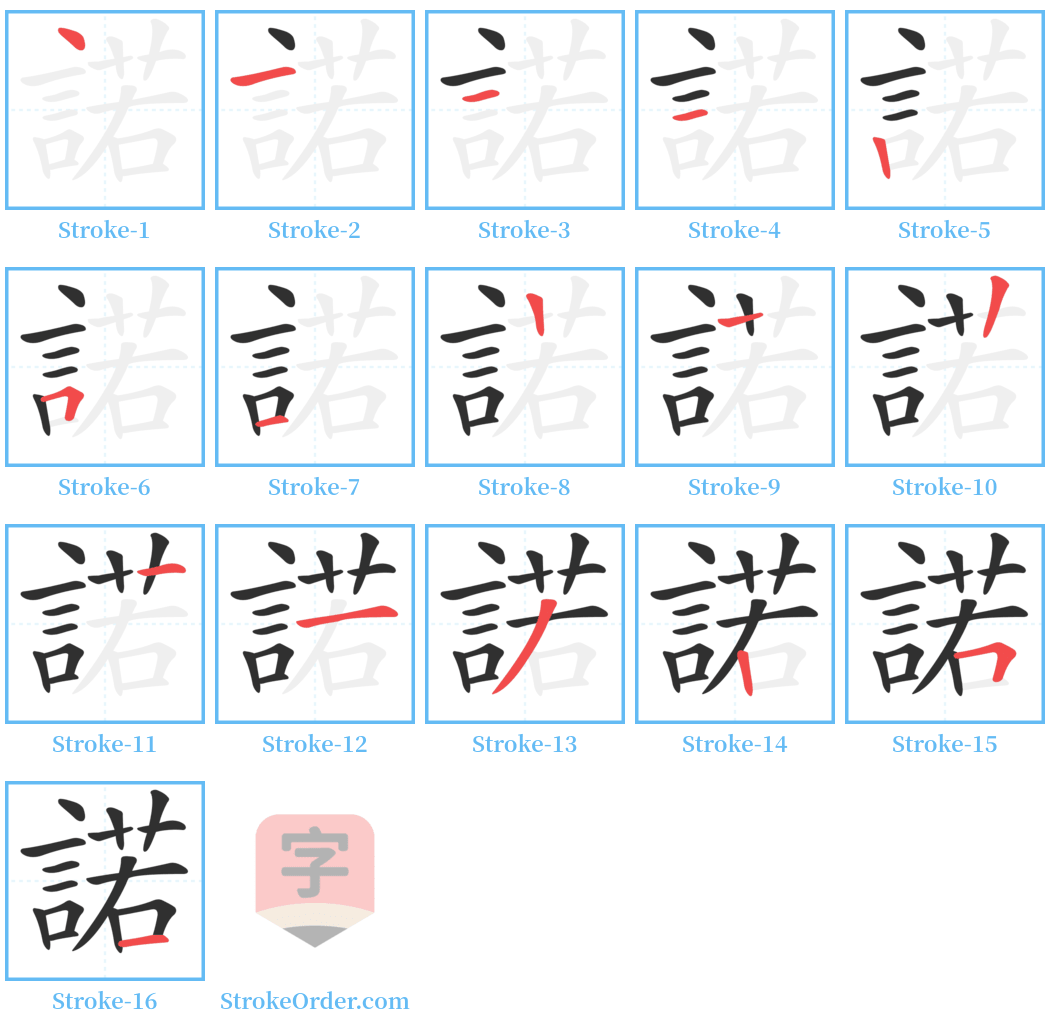諾 Stroke Order
Animated Stroke Order of 諾

Stroke Order Diagrams for 諾

Step-by-Step Handwriting Guide for 諾

Learn to Write Chinese Characters with Video Tutorials
Watch the video of writing the Chinese character "諾", learn the correct stroke order (笔顺) of the character "諾", and master the standard way of writing the character "諾".
Free Printable Handwriting Practice with Stroke Order: 諾
Printable Writing Practice Worksheet of "諾" in Portrait Orientation (Tian Zi Ge)

Printable Writing Practice Worksheet of "諾" in Landscape Orientation (Tian Zi Ge)

Information of 諾
Pinyin
nuò
Radical
言
Strokes
15 strokes
Usage
★★★
Definition
to promise / to yes
諾 (nuò)
1. The sound of agreement or consent.
- 答應的聲音,表示同意。
2. To agree or to allow.
- 答應,允許。
3. The sound of agreement indicating consent: e.g., 唯唯~~ (yes, yes).
- 答應的聲音,表示同意:唯唯~~。
4. To agree or permit: e.g., 諾言 (promise), 許諾 (to pledge), 承諾 (to undertake), 一諾千金 (a promise worth a thousand gold coins).
- 答應,允許:~言。許~。承~。一~千金。
5. This character indicates agreement (often used in hierarchical contexts, showing respect—lower to higher or peer to peer; the lower to the higher uses "謹諾").
- 同本義(一般用於上對下、尊對卑或平輩之間,卑對尊用「謹諾」 ([En.] yes))。
6. In ancient times, it was used at the end of official documents to indicate permission, similar to today's signature.
- 古時批字於公文之尾,表示許可叫「諾」,猶今簽字 ([En.] put 「okay」on a document)。
Citations:
1. 《說文》: 諾,應也。按,應詞也。緩應曰諾,疾應曰唯。
- Notes: 在《說文》中指出“應”即為“諾”。
2. 《詩·魯頌·閟宮》: 莫敢不諾。
- "No one dares to agree."
3. 《戰國策·趙策四》: 太后曰:「諾。恣君之所使之。」
- The queen said, “Okay. I allow you to do as you please.”
4. 《戰國策·齊策》: 孟嘗君不說,曰:「諾,先生休矣。」
- Mengchang Jun did not speak, saying, "Okay, you may stop, sir."
Examples:
- 諾諾: Repeated sound of agreement.
- 諾唯: To agree.
- 諾許: To promise; to consent.
7. In ancient times, it was used on official documents to indicate permission, similar to today's signature.
- 古時批字於公文之尾,表示許可叫「諾」,猶今簽字 ([En.] put 「okay」on a document).
Citations:
1. 清· 黃遵憲《述聞》: 是誰畫諾誰傳詔,一紙明貽萬國羞!
- "Whoever draws a 'yes' conveys the edict, and a single paper brings shame to the whole country!"